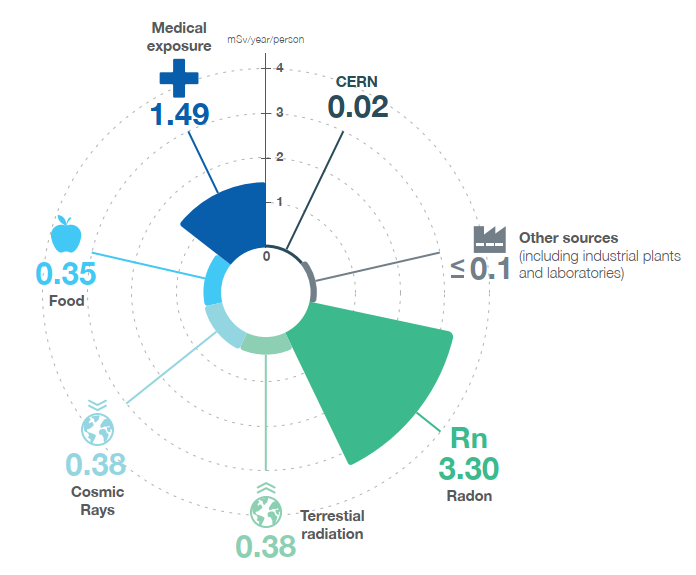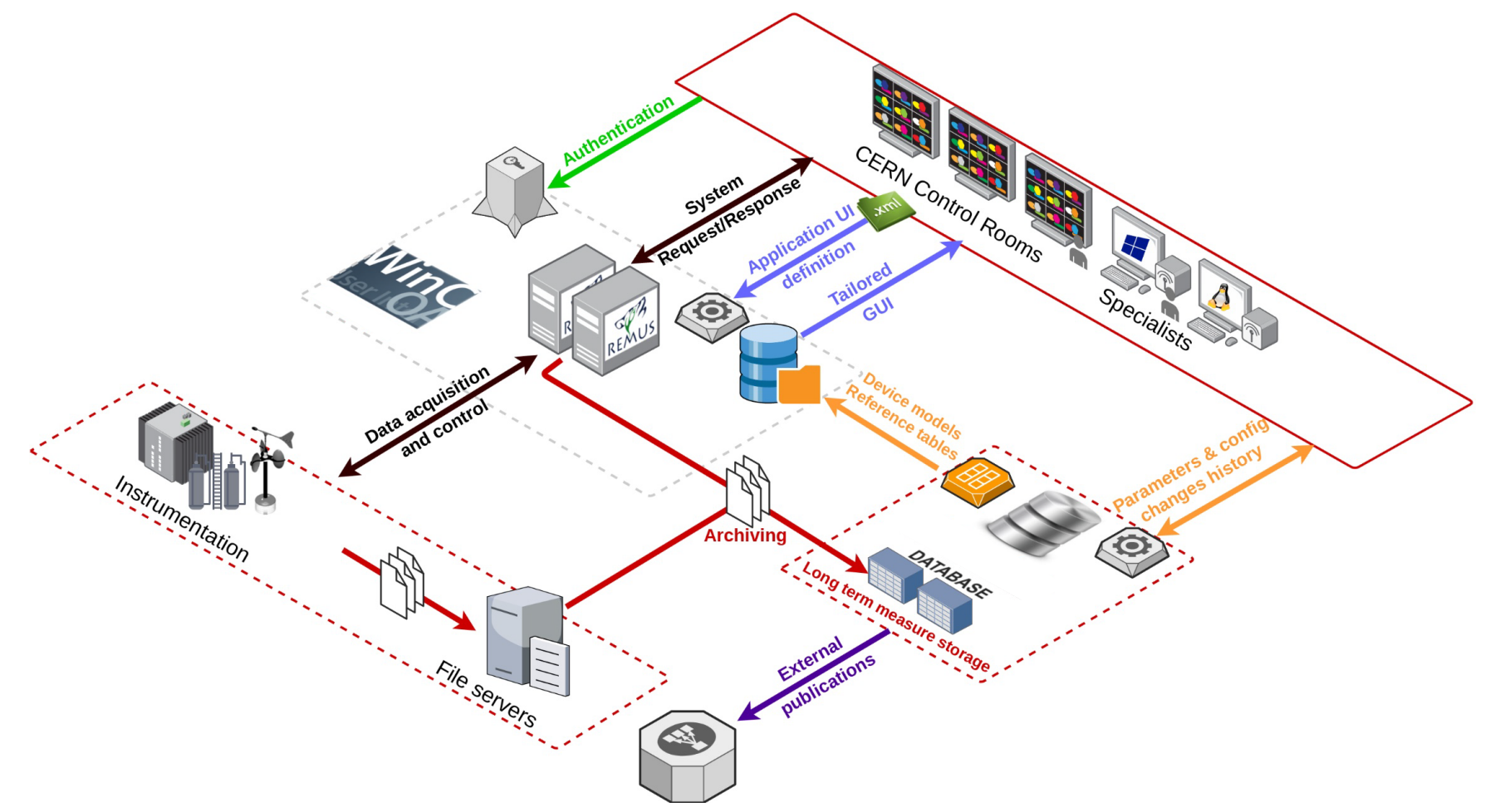At CERN, ionising radiation is produced by the collision of particle beams with matter. CERN’s unique facilities require innovative approaches to minimising the exposure of workers, the public and the environment, making CERN one of the recognised leaders in this field.
Radiation — a natural phenomenon

Radiation is all around us. It comes from the Earth and from space. It is present in our food, and we receive doses of it in medical examinations such as X-rays and when we travel by air. Industrial and research facilities can also generate ionising radiation.
The European Council sets the annual dose limit for public exposure from artificial sources, with the exception of exposure for medical reasons, at 1 millisievert (mSv). CERN is well within its commitment to limit its contribution to less than a third of this value: no more than 0.3 mSv per year. The actual dose due to the Organization’s activities received by any member of the public living in the immediate vicinity of CERN is below 0.02 mSv in a typical year when all the Laboratory’s facilities are operational. This is much lower than the dose received from natural sources and medical examinations, as shown in the figure.
During 2019 and 2020, with CERN’s beam and experimental facilities shut down for maintenance and upgrades, the actual dose was less than 0.0002 mSv per year, about 10 000 times lower than the annual dose received from cosmic rays, terrestrial radiation, radon and food.
Responsible reporting
CERN follows best practice in matters of radiation protection and radiation safety, taking into account Host State legislation as well European and international standards. A tripartite agreement on radiation protection and radiation safety with the Host States provides the legal framework for the discussion of CERN-wide radiation safety and radiation protection matters in a transparent and collaborative way (see Management approach). As part of this agreement, CERN reports quarterly on radioactivity measurements in the local environment to the Swiss and French authorities. The Organization always strives to apply the latest developments in applicable standards, and to adapt to evolving requests from the Host State authorities.
The methods used to evaluate doses that might be received by members of the public are based on widely recognised models and standards and consider the specific nature of CERN’s facilities. The Laboratory has recently updated its methods, which are currently undergoing meticulous review by the Host State authorities as part of a homologation process.
State-of-the-art monitoring
CERN operates an extensive network of environmental radiation monitors and online sampling systems, which is part of the Radiation Monitoring System for the Environment and Safety (RAMSES) managed by the HSE unit. In 2020, CERN’s environmental monitoring programme included 136 measuring stations comprising 649 detectors, 511 of which are dedicated to radiological monitoring. All measurement data is compiled and managed centrally by a CERN-developed software package called REMUS (Radiation and Environment Monitoring Unified Supervision). During the second long shutdown of the LHC, CERN upgraded its radiation monitoring stations for releases to air and water.
The environmental monitoring programme includes the planning of monitoring needs for the next decade so as to always ensure state-of-the-art monitoring of the evolving operation of CERN’s facilities.

In focus
Pavol Vojtyla, a member of CERN’s Radiation Protection group, is involved as an expert in the revision of a guideline from the Swiss Federal Nuclear Safety Inspectorate (ENSI).
— What is this guideline about?
PV: The ENSI guideline G14 concerns the calculation of doses due to ionising radiation in the environment that are caused by the emission of radioactive substances from nuclear installations. This directive applies to all nuclear power plants in Switzerland. A revision of the guideline started in 2019 and the project is still ongoing.
— Why is CERN involved in this revision?
PV: The guideline determines the methods to be used in radiological impact assessments of the environment. CERN has been performing similar calculations tailored to the Organization’s specific conditions for more than two decades. CERN’s acquired knowledge, in particular for calculating external doses due to exposure to radioactive substances in the air, has been helpful for the revision of the guideline.
Learn more
Questions regarding this report may be addressed to environment.report@cern.ch.
